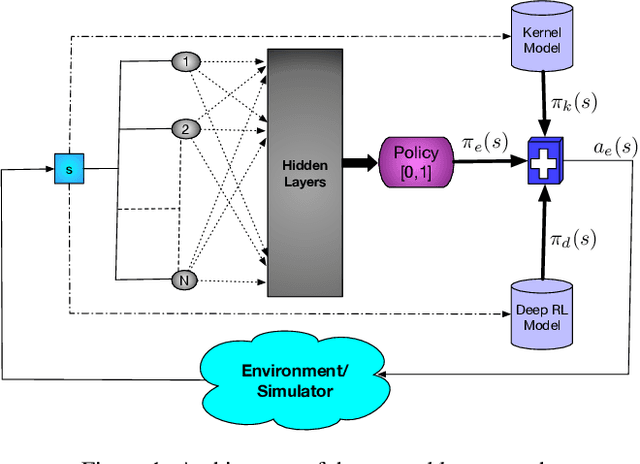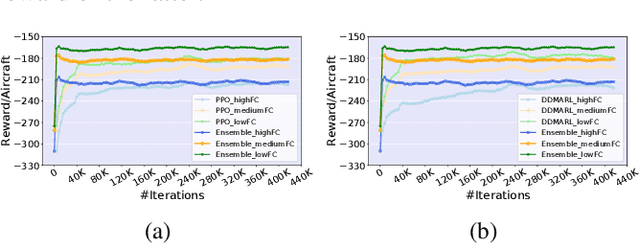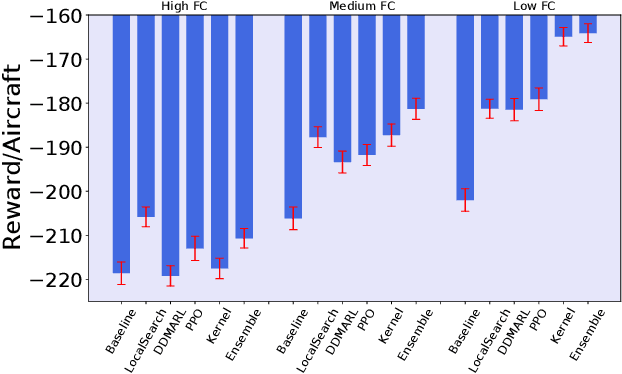Hasan Poonawala
A Deep Ensemble Multi-Agent Reinforcement Learning Approach for Air Traffic Control
Apr 03, 2020



Abstract:Air traffic control is an example of a highly challenging operational problem that is readily amenable to human expertise augmentation via decision support technologies. In this paper, we propose a new intelligent decision making framework that leverages multi-agent reinforcement learning (MARL) to dynamically suggest adjustments of aircraft speeds in real-time. The goal of the system is to enhance the ability of an air traffic controller to provide effective guidance to aircraft to avoid air traffic congestion, near-miss situations, and to improve arrival timeliness. We develop a novel deep ensemble MARL method that can concisely capture the complexity of the air traffic control problem by learning to efficiently arbitrate between the decisions of a local kernel-based RL model and a wider-reaching deep MARL model. The proposed method is trained and evaluated on an open-source air traffic management simulator developed by Eurocontrol. Extensive empirical results on a real-world dataset including thousands of aircraft demonstrate the feasibility of using multi-agent RL for the problem of en-route air traffic control and show that our proposed deep ensemble MARL method significantly outperforms three state-of-the-art benchmark approaches.
Robust commuter movement inference from connected mobile devices
Mar 04, 2019



Abstract:The preponderance of connected devices provides unprecedented opportunities for fine-grained monitoring of the public infrastructure. However while classical models expect high quality application-specific data streams, the promise of the Internet of Things (IoT) is that of an abundance of disparate and noisy datasets from connected devices. In this context, we consider the problem of estimation of the level of service of a city-wide public transport network. We first propose a robust unsupervised model for train movement inference from wifi traces, via the application of robust clustering methods to a one dimensional spatio-temporal setting. We then explore the extent to which the demand-supply gap can be estimated from connected devices. We propose a classification model of real-time commuter patterns, including both a batch training phase and an online learning component. We describe our deployment architecture and assess our system accuracy on a large-scale anonymized dataset comprising more than 10 billion records.
 Add to Chrome
Add to Chrome Add to Firefox
Add to Firefox Add to Edge
Add to Edge